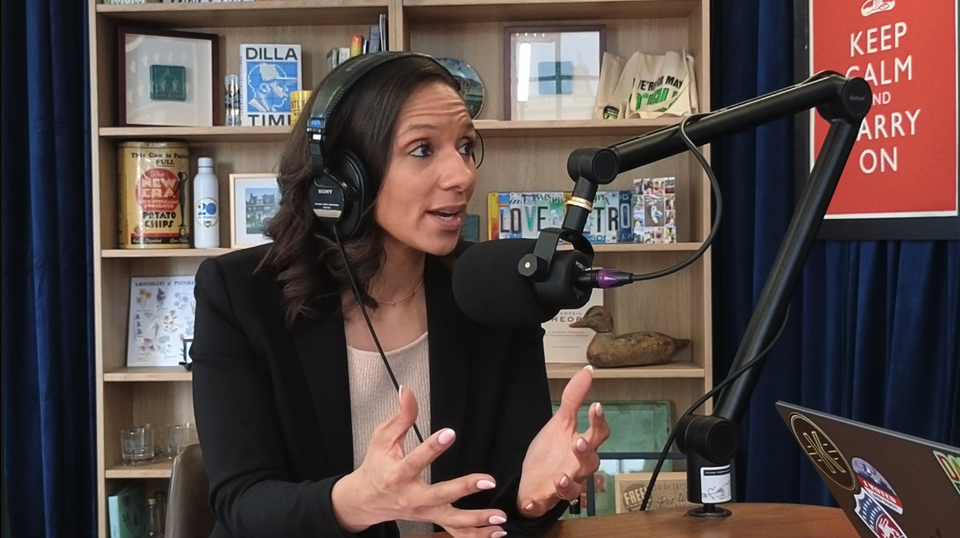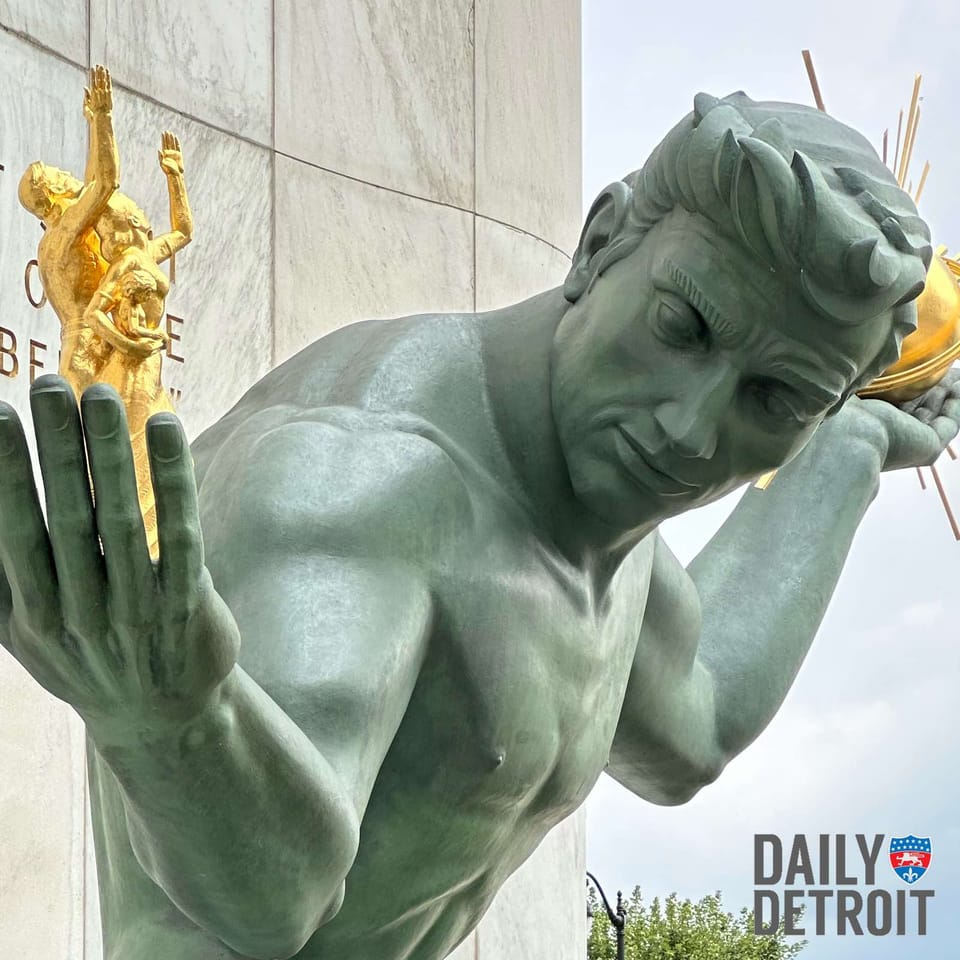Obviously the history, social fabric, and current issues facing Detroit as a region make it ripe for discussion around the Eric Garner and Michael Brown incidents. Detroit has had not one, but three race riots in its history. The most recent being in 1967, occurred when white police raided a blind pig on Detroit’s West Side and decided to arrest 82 black people celebrating the return home of two GI’s from the Vietnam war. It has helped shape why we now live in one of the most racially segregated metropolitan areas in America. Today there are questions about what happens to the disenfranchised, poorer, black population of the city as a more educated, richer, whiter population moves back into downtown, midtown, and other pockets. What will Detroit do now, at this pivotal point in its own narrative, with the light being shone on the tensions and issues across the country? The same issues have been on the forefront of our minds as Detroiters for decades. It’s time to talk about it, and keep talking about it. It’s critical.
The microscope of the nation, a nation outraged, confused and ignited by Garner and Brown and cases like it … is on us. Because Detroit is a blooming petri dish of the urban condition. The social climate and economic problems here have reached an advanced stage. Detroit weighs heavily in the zeitgeist.
Even in recent months we certainly are not outsiders looking in on Garner and Brown. We’ve had our fair share of race related cases that were not international social media sensations. Consider the following.
Renisha McBride, a black unarmed teenager ostensibly looking for help, was shot point blank in the face, with a shotgun, by Theodore Wafer on his doorstep in Dearborn Heights last November, in a case that drew comparisons to the Trayvon Martin Tragedy. Wafer was recently sentenced to 17 years.
Then there is Steven Utash, who back in April was beaten within an inch of life by a crowd of angry black men when he stopped to offer assistance to a black boy whom he hit with his car on the Northeast side. The boy was playing chicken in the road. During the beating, his life was saved by a black woman who threw her body on top of his, ending the melee. Four men have been charged, but the sentencing drew criticism from the Wayne County Prosecutors office for being too light.
Also, just recently in October, charges for involuntary manslaughter were dropped against a white officer, Joseph Weekley, who shot a 7 year old girl by accident when a flash grenade went off during the course of a drug raid on the East side in 2010. He did not follow his training protocol, and kept his finger on the trigger of his submachine gun when they entered the home. There was a reality TV show crew present when the incident occurred.
Clearly there is too much tragedy that is exacerbated by race issues in Detroit. There is much work to be done.
Though Garner and Brown may be trending exponentially on social media, these topics might be the elephant in the room around water coolers and break rooms across the Metro. Heavy topics like these don’t easily fit into everyday small talk. Yet, the conversations between black and white, young and old, friend and stranger, need to keep happening. Interpersonal face-to-face conversations, with eye contact and body language. That’s where real life happens, and how people learn and grow. The peanut gallery of Facebook, while amazing for creating a buzz and being a springboard, is not exactly an ideologically transformative space.
But a bar is. A couple of cold ones will loosen up the communication barriers.
I was at the Stonehouse on Thanksgiving Night, on Ralston and State Fair between 7 and 8 Mile. One of the oldest bars (if the not the oldest) in the city. A great mixing place where Detroiters from all walks of life drink together as equals. The bar had served a Thanksgiving feast all day to the neighborhood, a tradition that they have been keeping for 13 years. Just about ready to close, myself and a couple friends (white) and a couple other patrons (black) managed to convince the tired bartender to stay open for a couple more rounds. The face of Michael Brown hovered on a muted newscast on the TV screens above our heads.
Doug, a regular, looked over with an expression of dismay and said, “I don’t know exactly what’s going on in this Michael Brown case, I don’t know what’s going on with the world.” We nodded. He raised his glass, “but we’re Detroiters, and we need to keep to keep being Detroiters and doing our thing. This is where it happens, this is how it gets better. In a bar, just like this, people talking. You may be a completely different person than me, but at the end of the day we’re not so different. I believe in the difference between right and wrong, and looting and burning people’s businesses is wrong.”
A toast was made. We should be getting beyond the difference in the color of our skin. This is 2014 after all, and the world we live in is absurd.
Doug paused and looked up.”What we really should be doing, is having another drink and taking a goddamn selfie!”
And that’s exactly what we did. Amen. The jukebox started pumping out Michael Jackson at that instant. This is the Detroit I know and the Detroit that I love. It’s not a conversation I’ve had one time, it’s what I keep running into. I’ve started living here over 5 years ago. I’ve had a share of the negative as well, but this why I keep living here.
We’ve got to remember that Detroit is a progressive place. That’s the thing we can be sure about living in the petri dish. The city is 85% black and a white mayor was elected a year ago on a write-in campaign because Detroiters believe he is the right man for the job. Yet during the first year of his term, Duggan’s authority took a backseat to the financial restructuring under Emergency Financial Manager, Kevin Orr, who happens to have been black. Now Orr is returning authority to the Mayor as we emerge from bankruptcy. Streetlights are turning on in neighborhoods across the city. Investment is coming in. Through it all, the DIA has been saved. Pensions for retired city workers have not been lost.
On a more localized scale you see amazing efforts in communities where people are working together to make things better block by block. A business here, a restaurant there. Blight is getting cleaned up. Recreational spaces for kids are being created. The non-profits who continue to serve the region are being supported. Foundation money is being directed not only to new things, but also to the small businesses that have stood the test of time.
And yet the revitalization of Detroit, remains a rickety apple cart. A climate of national unrest could threaten our tenuous position, if we’re not careful. Some media is beginning to criticize the “New Detroit” as a racist endeavor that’s stacked against people who have lived here all their lives. These are sensitive topics, and if not handled correctly, could turn into a firestorm that’s bad for development. I don’t have all the answers but I do know this: We can’t afford to backslide against what history has taught us here in Detroit, which is that we need more constructive, creative, real life solutions to the problems.
“But this is Metro Detroit. Race is a way of life.” – A quote from Charlie LeDuff’s Book, Detroit: An American Autopsy.
To me, that doesn’t mean we are bound by the past, but rather that we are better equipped for the future. We know where the lines are, we know when to cross them, we know where we’re welcome and where we’re not, and when to let your guard down. It’s about respect. If you are new here, you’re gonna learn it. It’s about recognizing history but looking forward together, embracing change, and doing things the right way. It’s about the difference between right and wrong. As the city gentrifies, it’s about trying as best we can to make sure that all boats rise together. We’ve got to be pre-emptive about these things.
As a 28-year-old white man, I will never be able know what it’s like to be black. I can’t walk a mile in those shoes. The only way I can understand is to listen. If we communicate, we can push Detroit forward. Don’t just “like” a post on Facebook and think you’ve contributed to a cause. It starts with a real conversation. Assumption is ignorance. Ask somebody who doesn’t look like you how they feel about what’s going in this country and in this city. Maybe it’s your mail delivery person that you’ve known for ten years. Or the guy who works at the donut shop. Maybe it’s a friend. Or an in-law. Ask the guy sitting next to you at the bar. If you don’t know your neighbor, go knock on their door and shake their hand. There are bridges to build everywhere. Now is the time.
Of course, there is more to do than converse. Do protest, but peacefully. Do petition. Do assemble. But do not turn your back on your neighbors in this city and across the Metro.
Detroit’s problems might be more advanced than other cities in the country, but I believe our solutions will be as well. Our city’s motto, on the city flag is: “We hope for better things; it shall rise from the ashes.”
In the wake of Garner and Brown, I hope Detroit can be an example. In some ways, perhaps it already is. If you are one of the people who knows, you can see it. Be one of the people who knows.














